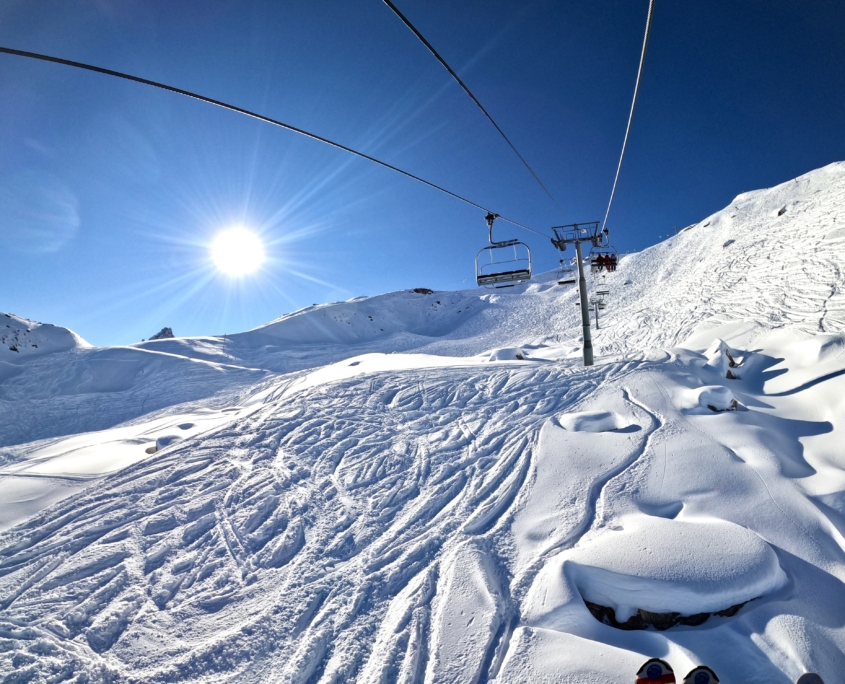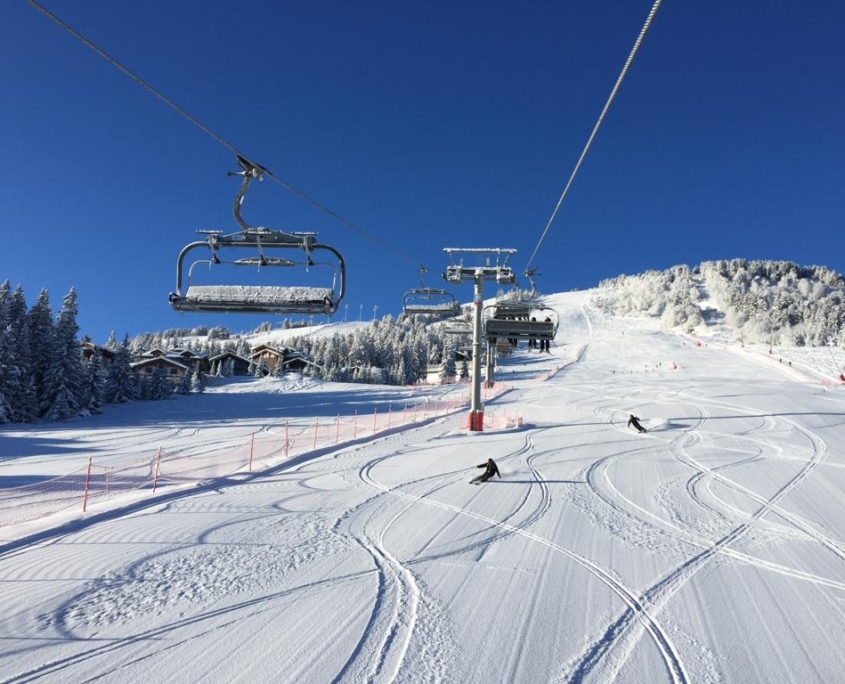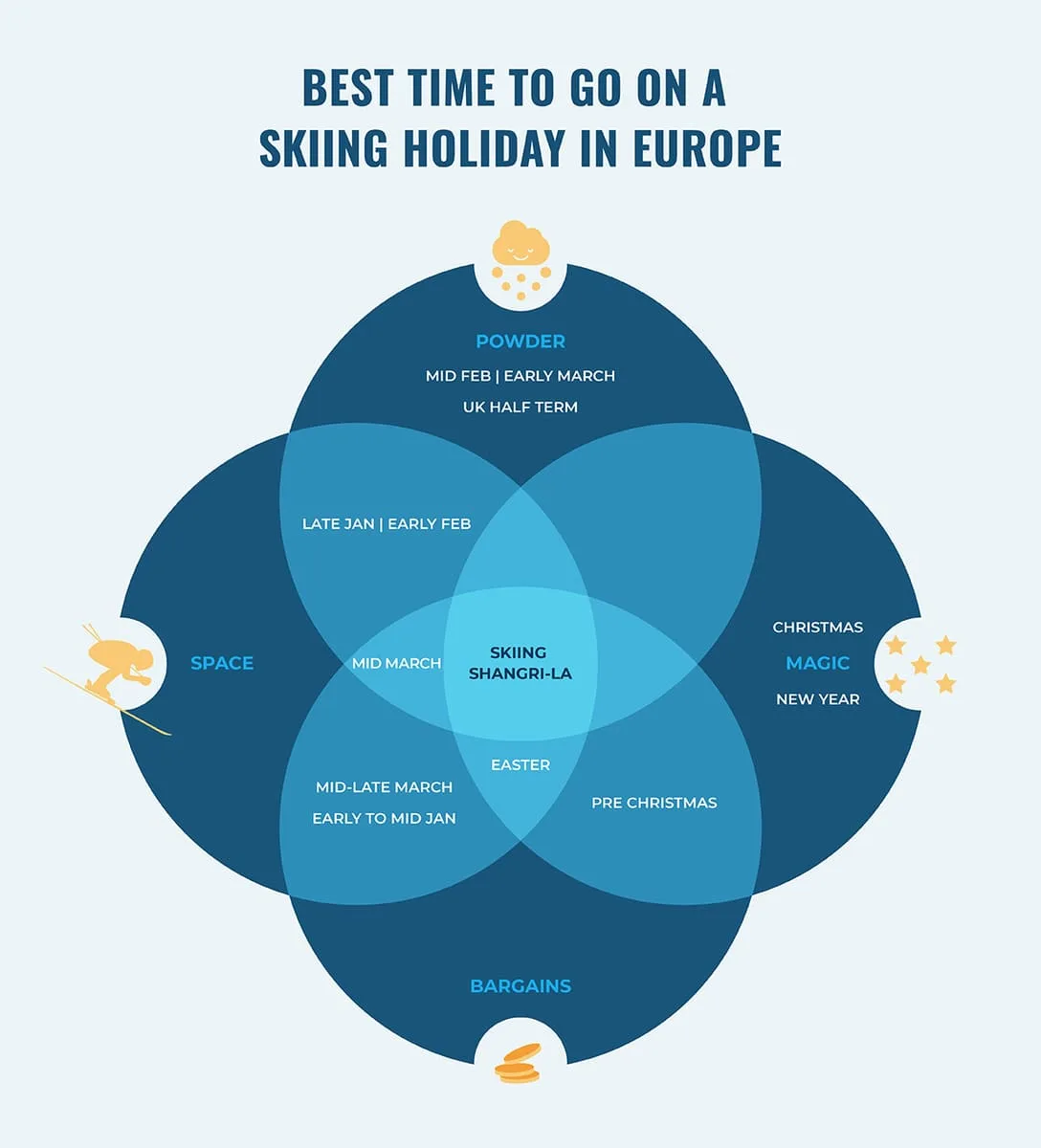Skiing in Europe offers a blend of stunning landscapes and diverse terrains. Finding the best time to hit the slopes can make or break your experience.
Europe boasts some of the world’s most iconic ski resorts. The continent’s varying climates and elevations offer unique skiing conditions throughout the year. Whether you’re a seasoned skier or a beginner, timing your trip right can enhance your adventure. Understanding when to plan your visit can help you enjoy the best snow, fewer crowds, and ideal weather.
This blog post will guide you through the prime times to ski in Europe, considering factors like snow quality, weather patterns, and peak tourist seasons. Ready to discover the perfect time to ski in Europe? Let’s dive in!
Choosing The Right Season
Skiing in Europe offers diverse experiences, but choosing the right season is key. Each season brings unique benefits and challenges. Understanding these can help you plan the perfect ski trip.
Winter Wonderland
The winter months, from December to February, provide the classic ski experience. The snow is fresh and abundant. Temperatures are cold, creating perfect conditions for skiing. Many European resorts boast exceptional facilities during this period. Popular destinations include the French Alps, Swiss resorts, and Austrian slopes.
Benefits:
- Great snow quality
- Festive atmosphere
- Full range of resort services
Considerations:
- Higher prices
- More crowded slopes
- Colder temperatures
Spring Skiing
Spring skiing occurs from March to early May. The days are longer and warmer. This season offers a more relaxed vibe compared to winter. Skiing in spring provides a mix of good snow and pleasant weather. Many resorts remain open and less crowded.
Benefits:
- Warmer temperatures
- Longer daylight hours
- Lower prices
Considerations:
- Snow may be less reliable
- Some resorts close early
- Variable weather conditions
To help you decide, here’s a quick comparison:
| Season | Benefits | Considerations |
|---|---|---|
| Winter | Great snow quality, festive atmosphere, full services | Higher prices, crowded, cold |
| Spring | Warmer, longer days, lower prices | Less reliable snow, some resorts close, variable weather |
Top Ski Destinations
Europe offers some of the best ski destinations in the world. With diverse landscapes and excellent snow conditions, there’s something for every level of skier. Let’s explore some of the top ski destinations that promise an unforgettable winter experience.
Alps Adventure
The Alps are the ultimate destination for ski enthusiasts. They span across several countries, including France, Italy, Switzerland, and Austria. The region boasts a variety of slopes, from gentle beginner runs to challenging expert trails. Resorts like Chamonix, St. Moritz, and Courchevel are famous for their stunning scenery and world-class facilities.
In the Alps, you can enjoy long ski seasons, usually from December to April. The area also offers charming alpine villages, luxurious accommodations, and vibrant après-ski scenes. Whether you seek thrilling descents or relaxing mountain views, the Alps have it all.
Scandinavian Slopes
For a unique skiing experience, head to Scandinavia. Countries like Norway and Sweden offer beautiful and less crowded ski resorts. Trysil and Åre are popular choices, known for their well-groomed slopes and family-friendly atmosphere.
Scandinavia offers reliable snow conditions and a longer ski season, often extending from November to May. The region’s serene landscapes and Northern Lights add to the magical experience. It’s an excellent choice for those who prefer a quieter and more relaxed ski holiday.
Weather Considerations
Skiing in Europe offers a wonderful experience with diverse weather conditions. Knowing the weather patterns helps you choose the best time to ski. Understanding snowfall and temperature trends is crucial for an enjoyable trip.
Snowfall Patterns
Snowfall in Europe varies by region and altitude. The Alps, Pyrenees, and Scandinavian mountains receive ample snow. The Alps typically see heavy snowfall from December to March. Pyrenees experience good snow from January to February. Scandinavian mountains get consistent snow from November to April.
Temperature Trends
Temperature trends affect snow quality and skiing conditions. In the Alps, temperatures range from -2°C to -10°C in winter. The Pyrenees have milder temperatures, usually between 0°C and -5°C. Scandinavian regions are colder, with temperatures from -5°C to -15°C. Warmer temperatures might lead to melting snow. Colder temperatures ensure firm and fresh snow.

Crowd Levels
Finding the best time to ski in Europe often depends on crowd levels. Knowing the peak and off-peak times can help plan a perfect trip. These periods affect the slopes, lifts, and overall experience.
Peak Season Rush
Peak season in Europe usually spans from mid-December to late February. This period includes Christmas and New Year holidays. Expect crowded slopes and long lift lines. Ski resorts are bustling with tourists. Hotels and accommodations book up fast. Prices are often higher during this time. Many families and groups choose to vacation together. Resorts offer many events and activities. The atmosphere is festive and lively. Ski schools are often fully booked. Advanced booking is essential during peak season. Popular ski areas see the most visitors.
Off-peak Serenity
Off-peak times offer a more peaceful ski experience. These periods are from late November to early December and late February to April. Fewer tourists visit the slopes. Lift lines are shorter and more manageable. Accommodations are easier to find and book. Prices are generally lower in off-peak seasons. The atmosphere is calm and relaxed. Ski schools have more availability. It’s easier to explore the ski area. Resorts are less crowded and more enjoyable. Off-peak skiing offers a serene experience. Enjoy the beauty of the mountains without the rush.
Accommodation Options
Planning a ski trip to Europe? Knowing your accommodation options is key. Europe offers a variety of lodgings to fit every budget and taste. From luxury resorts to budget-friendly lodgings, you’ll find the perfect place to stay. Let’s explore some of the best options.
Luxury Resorts
For those seeking luxury and comfort, Europe’s ski resorts won’t disappoint. These resorts provide top-notch amenities and services.
- Five-Star Hotels: Experience world-class service and amenities.
- Chalets: Enjoy a cozy yet luxurious stay in private chalets.
- All-Inclusive Resorts: Everything you need in one place.
Many luxury resorts offer ski-in/ski-out access. This means you can hit the slopes right from your door. They also feature spas, gourmet dining, and personalized services. Your stay will be as enjoyable off the slopes as on them.
Budget-friendly Lodgings
Not everyone can splurge on luxury. Europe also offers many budget-friendly options for skiers.
- Hostels: Great for solo travelers or groups on a budget.
- Guesthouses: A homely and affordable option.
- Self-Catering Apartments: Ideal for longer stays and cooking your own meals.
These options are cost-effective yet comfortable. Hostels and guesthouses often provide communal areas. This makes them great for meeting other travelers. Self-catering apartments give you the freedom to cook and save on dining out.
Choosing the right accommodation can make or break your ski trip. Whether you want luxury or are on a budget, Europe has something for everyone.
Travel Tips
Skiing in Europe can be an unforgettable experience. But, it’s important to be well-prepared. Here are some travel tips to make your trip smooth and enjoyable.
Packing Essentials
Packing for a ski trip is different from other vacations. You need to bring the right gear to stay warm and safe.
- Warm Clothing: Pack thermal underwear, sweaters, and waterproof jackets.
- Ski Equipment: If you have your own skis, make sure they are packed securely.
- Accessories: Don’t forget gloves, scarves, and beanies.
- Health Kit: Include sunscreen, lip balm, and a first-aid kit.
- Documents: Keep your passport, travel insurance, and ski pass handy.
Navigating Airports
Getting through airports with ski equipment can be challenging. Here are some tips to help you navigate airports with ease.
- Arrive Early: Get to the airport earlier than usual.
- Check Baggage Policies: Know your airline’s baggage rules for ski equipment.
- Use Ski Bags: Invest in a sturdy ski bag for protection.
- Label Everything: Clearly label all your bags with your contact information.
- Stay Organized: Keep your travel documents accessible for quick check-ins.
Following these tips can save you time and stress at the airport.
Safety Precautions
Skiing in Europe offers breathtaking landscapes and thrilling runs. Yet, safety should always come first. Understanding safety precautions ensures a fun and secure trip. Here are essential tips for your skiing adventure.
Avalanche Awareness
Avalanches can pose significant risks on the slopes. Always check the avalanche forecast before skiing. This information helps you understand the current snow conditions and risks. Carrying avalanche safety gear is crucial. This includes a beacon, probe, and shovel. Take a course on avalanche safety. Knowledge can save lives.
Follow marked trails and signs. They guide you to safer paths. Avoid skiing alone. Skiing with a partner ensures help is available if needed. Always stay informed and cautious.
Health And Fitness
Skiing demands physical fitness. Prepare your body before hitting the slopes. Engage in regular exercise to build strength and endurance. Focus on leg and core workouts. These muscles are key for skiing stability.
Staying hydrated and eating well is vital. Proper nutrition fuels your body and keeps you energized. Warm-up exercises prevent injuries. Stretching before skiing prepares your muscles for activity.
Know your limits. Avoid pushing beyond your capabilities. Rest when needed. Listen to your body and take breaks to prevent exhaustion. Safety comes from being fit and aware.

Après-ski Activities
After a thrilling day on the slopes, the fun doesn’t stop. Europe offers a variety of après-ski activities to enhance your ski holiday. From delicious dining experiences to cultural excursions, there’s something for everyone. Let’s dive into some of the best après-ski activities you can enjoy.
Dining And Nightlife
European ski resorts are famous for their vibrant dining and nightlife options. Imagine warming up with a hot meal in a cozy mountain restaurant. Here are some popular choices:
- Fondue and Raclette: Traditional cheese dishes perfect for a cold night.
- Gourmet Dining: Enjoy high-end restaurants with stunning views.
- Local Cuisine: Taste regional specialties unique to each country.
As the night falls, the après-ski scene comes alive. Bars, pubs, and nightclubs offer a lively atmosphere:
- Live Music: Many venues feature local bands and DJs.
- Themed Parties: Join in on costume parties and special events.
- Cozy Pubs: Relax with a drink in a warm, friendly environment.
Cultural Excursions
Aside from the nightlife, Europe boasts rich cultural experiences. Ski resorts often sit near historic towns and landmarks. Consider exploring these cultural excursions:
- Museums: Discover local history and art.
- Historic Sites: Visit castles, churches, and ancient ruins.
- Local Markets: Shop for unique souvenirs and taste local delicacies.
These activities offer a break from the slopes and a chance to immerse in local culture. Make your ski holiday unforgettable with these enriching experiences.

Frequently Asked Questions
When Is The Best Time To Ski In Europe?
The best time to ski in Europe is from December to April. The peak season is January to February, offering excellent snow conditions.
Which European Countries Have The Best Ski Resorts?
Switzerland, France, Austria, and Italy are known for their top-notch ski resorts. They offer diverse slopes, stunning scenery, and great facilities.
What Should I Pack For Skiing In Europe?
Pack thermal clothing, waterproof ski gear, gloves, goggles, and a helmet. Don’t forget sunscreen and lip balm to protect from UV rays.
Are European Ski Resorts Expensive?
Prices vary, but many European ski resorts can be pricey. However, you can find budget-friendly options in Eastern Europe like Bulgaria and Romania.
Conclusion
The best time to ski in Europe depends on your preferences. Early winter offers fresh snow and fewer crowds. Mid-season guarantees excellent conditions and lively resorts. Late season means longer days and warmer weather. Each period has its charm. So, choose what suits you best.
Enjoy your skiing adventure in Europe!



